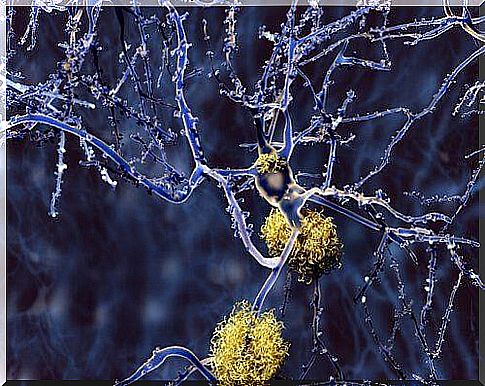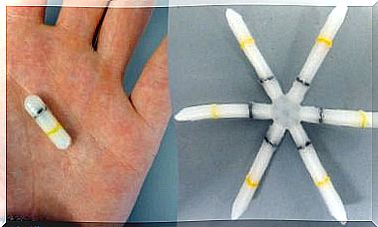Types Of Dementia
Although Alzheimer’s and Parkinson’s are the two most popular types of dementia, there are others that can have equally devastating effects. It is therefore very important that as many people as possible also know and understand these types of dementia. This is the only way to ensure effective prevention.

The changes that cause Alzheimer’s to develop in the brain are largely unknown to many people. This lack of sufficient information may be the reason why many people mistakenly associate very different types of dementia with Alzheimer’s disease.
In today’s article we want to give you more information about the different types of dementia . This will help you understand them better and prevent them.
Some facts about Alzheimer’s
The initial symptoms of Alzheimer’s disease are well known: Difficulty remembering names and recent conversations. Unfortunately, these symptoms get worse and worse as the disease progresses.
Over time, patients experience increasing difficulty in having normal conversations. They change their behavior and often lose their judgment. They can also have trouble eating or even walking.
Often the risk of whether a person will develop Alzheimer’s disease or not is viewed as an unfavorable genetic disposition.
The Alzheimer’s disease is the most common cause of dementia. However, it is not the only reason for this. That may be the reason that almost everyone confuses it with it.
Types of dementia that are not Alzheimer’s disease

Now that we’ve given you a few facts about Alzheimer’s disease, we’d like to introduce you to other types of dementia. They are often confused with Alzheimer’s dementia:
1. Vascular dementia
Vascular dementia develops due to impaired blood flow in the brain. The trigger for the impaired blood flow can be a blood clot or a blockage in the blood vessels.
This type of dementia can also cause a stroke. It is particularly characterized by the fact that it is very difficult to predict. This also makes prevention more difficult.
Still, there are a few things you can do to reduce the risk. It is especially important that you take care to keep your heart healthy. So you should avoid anything that could harden or block your blood vessels. This means that you should take care to keep your cholesterol levels and your blood pressure stable and healthy.
By following these recommendations, you can also reduce your risk of developing diabetes at the same time .
2. Lewy body dementia (also called Lewy body dementia)

The Lewy bodies consist of the protein alpha-synuclein. In Lewy body dementia, small clumps of this protein form, especially in the area of the cerebral cortex. These then gradually lead to memory loss and further thought disorders.
These symptoms of the disease are very similar to those of Alzheimer’s dementia, which means that they can often not be easily differentiated.
Nevertheless, there are a few distinguishing features that suggest Lewy body dementia: sleep disorders, hallucinations and muscle stiffness. At the same time, these symptoms are also similar to those of Parkinson’s disease.
If patients with Lewy body dementia go to places that are very familiar to them, for example, they will be less and less able to remember them as the disease progresses. They may feel lost and helpless because the illness has made them forget that they once knew these places very well.
Among the most common types of dementia, Lewy body dementia is the second most common type after Alzheimer’s disease.
Therefore, you should make sure that you train your brain regularly and keep it active throughout your life. For example, you can learn a new language. You could also explore history, discover new places, or learn about other cultures.
You can contribute to the prevention of dementia yourself. Activate your brain through various hobbies and mental activities, educate yourself and thus stimulate your brain.
3. Parkinson’s dementia
We already talked about the protein alpha-synuclein in Lewy body dementia. It also plays an important role in the development of Parkinson’s dementia. When this protein clumps together in a certain part of the midbrain called the substantia nigra, it destroys nerve cells that produce dopamine.
Experts assume that this leads to the development of various motor disorders. These movement disorders are characteristic of Parkinson’s disease.
In addition, the typical tremor occurs and patients can only move very slowly.
What is very frightening about Parkinson’s disease is that no one has yet discovered the exact cause . So there is no really effective treatment for it. There is also still a great deal of uncertainty about possible prevention of the disease.
4. Pick’s disease

If the nerve cells in the frontal or temporal lobe of the brain are damaged, this is called frontotemporal dementia, also known as Pick’s disease . This type of dementia can cause profound changes in personality, behavior, and communication skills .
Patients who suffer from Pick’s disease can also become very disinhibited and impulsive. For example, it can happen that you have very large expenses without first discussing this with your partner or loved one.
Unfortunately, there is no effective treatment or medication for this type of dementia either. It is therefore very important that patients and their relatives ensure that injuries are avoided in daily life and that the patient lives as healthily as possible. This can also prevent a possible stroke.
5. Mixed dementia
So far, we’ve already given you some characteristics of different types of dementia. But things can get even worse: there are also cases in which patients suffer from different forms of dementia at the same time . In this case, several areas in the brain are damaged.
This type of dementia is known as mixed dementia. In most cases it is a combination of vascular dementia and Alzheimer’s disease.
For all of these reasons, you understand how important it is to keep your brain active and to avoid all risk factors as much as possible. That may sound difficult, but it is entirely possible. And definitely important to maintain your health.









